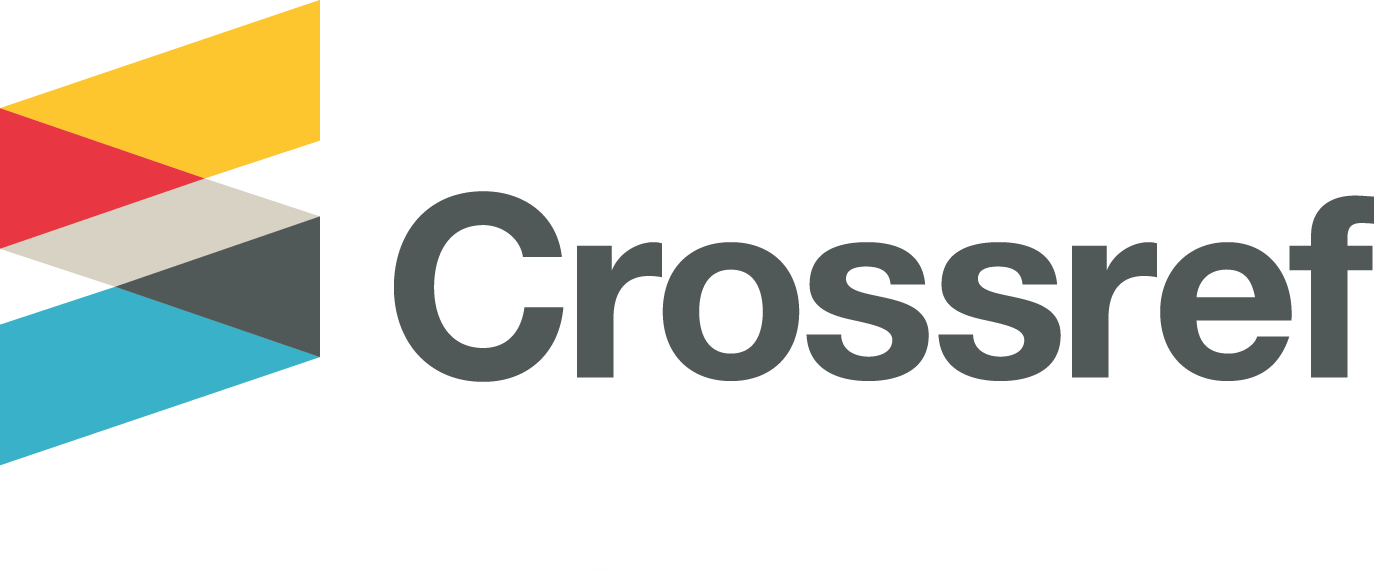Adolescent Resilience Reviewed by Gender
Abstract
Resilience is one of the important factors that can protect adolescents from overcoming the difficulties and challenges in life. This research aimed to examine the overview of resilience among adolescents in terms of gender. The respondents in this study were 342 teenagers aged 15-18 years, consisting of 202 females and 140 males. Data collection was conducted using the Child Youth Resilience Measure-Revised (CYRM-R) instrument, with non-experimental method. The collected data were analyzed using independent sample t-test to compare between adolescent females and males. The result of this study showed that 55% of the total number of respondents had a high level of resilience, while the remaining 45% had it at a low level. Similar results were also observed in the personal resilience subscale (54.7% high; 45.3% low) and the caregiver resilience subscale (52.3% high; 47.7% low). Further, the findings of this study indicated a significant difference between the levels of resilience in female and male adolescents, where the resilience score of female adolescents (mean = 68.75) were higher than those of males (mean = 66.64). Similar findings were observed in the personal resilience subscale, showing a significant difference in which female adolescents had higher scores compared to male adolescents. However, no significant difference was found in the caregiver resilience subscale, where the scores were relatively comparable. The findings of this study are expected to contribute to the understanding of resilience profiles in adolescents and the factors behind their resilience capabilities.
Resiliensi merupakan salah satu faktor penting yang dapat melindungi remaja dalam mengatasi kesulitan dan tantangan dalam hidup. Penelitian ini bertujuan untuk melihat gambaran resiliensi pada remaja ditinjau berdasarkan jenis kelamin. Responden dalam penelitian ini adalah 342 remaja usia 15-18 tahun, yang terdiri dari 202 perempuan dan 140 laki-laki. Pengumpulan data dilakukan menggunakan alat ukur Child Youth Resilience Measure-Revised (CYRM-R), dengan metode non-eksperimental. Data yang diperoleh kemudian dianalisis dengan independent sample t-test untuk melihat perbandingan antara remaja perempuan dan laki-laki. Hasil penelitian menunjukkan bahwa 55% dari total responden memiliki tingkat resiliensi yang berada pada kategori tinggi, dan 45% lainnya memiliki tingkat resiliensi pada kategori rendah. Hasil serupa juga terlihat pada subscale personal resilience (54.7% tinggi; 45.3% rendah), dan caregiver resilience (52.3% tinggi; 47.7% rendah). Selain itu, temuan dalam penelitian ini juga menunjukkan adanya perbedaan yang signifikan antara tingkat resiliensi pada remaja perempuan dan remaja laki-laki, di mana skor resiliensi remaja perempuan (mean = 68.75) lebih tinggi daripada laki-laki (mean = 66.64). Jika dilihat dari subscale, hal serupa juga terlihat pada personal resilience, yaitu ada perbedaan signifikan dengan skor remaja perempuan yang lebih tinggi daripada skor remaja laki-laki. Akan tetapi, dari subscale caregiver resilience, tidak terdapat perbedaan yang signifikan dan secara skor juga relatif hampir sama, antara remaja perempuan dan remaja laki-laki. Temuan dalam penelitian ini diharapkan dapat memberikan kontribusi mengenai gambaran resiliensi pada remaja, serta hal-hal yang dapat mendukung kemampuan resiliensi mereka.
Keywords
Full Text:
FULL TEXTReferences
Apriyani, Y., & Uyun, M. (2023). The Role of Self-Resiliency and Self-Efficacy to Increase Adversity Quotient. Psikoborneo: Jurnal Ilmiah Psikologi, 11(2), 162–167.
Borualogo, I. S., & Jefferies, P. (2019). Adapting the Child and Youth Resilience Measure-Revised for Indonesian Contexts. In Journal of Educational, Health and Community Psychology (Vol. 8, Issue 4). Jefferies.
Center for Reproductive Health, University of Queensland, & Johns Hopkins Bloomberg School of Public Health. (2022). Indonesia - National Adolescent Mental Health Survey (I-NAMHS) Report.
Cohen, J. (1988). Statistical Power Analysis for the Behavioral Sciences (Second Edition) (Second). Lawrence Erlbaum Associates, Inc.
Creswell, J. W. (2014). Research Design: Qualitative, Quantitative, and Mixed Methods Approaches (Fourth Edition). SAGE Publications, Inc.
Ghiffari, M., & Adriyansyah, M. A. (2022). Studi Resiliensi pada Mahasiswi Penyintas Kekerasan. Psikoborneo: Jurnal Ilmiah Psikologi, 10(3), 507–518.
Grotberg, E. (1995). A Guide to Promoting Resilience in Children: Strengthening The Human Spirit (Vol. 8). Bernard van Leer Foundation.
Hagen, R., Havnen, A., Hjemdal, O., Kennair, L. E. O., Ryum, T., & Solem, S. (2020). Protective and Vulnerability Factors in Self-Esteem: The Role of Metacognitions, Brooding, and Resilience. Frontiers in Psychology, 11. https://doi.org/10.3389/fpsyg.2020.01447
Jefferies, P., McGarrigle, L., & Ungar, M. (2018). The CYRM-R: A Rasch-Validated Revision of the Child and Youth Resilience Measure. Journal of Evidence-Informed Social Work, 16(1), 70–92. https://doi.org/10.1080/23761407.2018.1548403
Liebenberg, L., Ungar, M., & Vijver, F. Van de. (2012). Validation of the Child and Youth Resilience Measure-28 (CYRM-28) Among Canadian Youth. Research on Social Work Practice, 22(2), 219–226. https://doi.org/10.1177/1049731511428619
Liu, Q., Jiang, M., Li, S., & Yang, Y. (2021). Social support, resilience, and self-esteem protect against common mental health problems in early adolescence A nonrecursive analysis from a two-year longitudinal study. Medicine (United States), 100(4). https://doi.org/10.1097/MD.0000000000024334
Mandleco, B. L., & Peery, J. C. (2000). An Organizational Framework for Conceptualizing Resilience in Children. Journal of Child and Adolescent Psychiatric Nursing, 13(3), 99–111.
Oktaviana, A. (2013). Hubungan Locus of Control dan Dukungan Sosial dengan Resiliensi pada Remaja Penyandang Tuna Rungu. Psikoborneo: Jurnal Ilmiah Psikologi, 1(1), 1–5.
Puspitaningrum, N. P. P., & Pudjiati, S. R. R. (2021). Peran resource dan vulnerability index of resilience terhadap distres psikologis remaja saat pandemi Covid-19. Jurnal Ilmiah Psikologi Terapan, 9(2), 156–163. https://doi.org/10.22219/jipt.v9i2.14265
Rahim, A. A. (2017). Hubungan antara Resiliensi dengan Motivasi Belajar. Psikoborneo: Jurnal Ilmiah Psikologi, 5(3), 378–381.
Rakhmadianti, D., Kusdiyati, S., & Borualogo, I. S. (2021). Pengaruh Resiliensi terhadap Subjective Well-Being pada Remaja di Masa Pandemi COVID-19. Prosiding Psikologi, 7(2).
Rensburg, A. V., Theron, L., & Rothmann, S. (2019). A Social Ecological Modeled Explanation of the Resilience Processes of a Sample of Black Sesotho-Speaking Adolescents. Psychol Rep., 122(4), 1211–1234.
Resilience Research Centre. (2022). Child and Youth Resilience Measure (CYRM) & Adult Resilience Measure (ARM) User Manual. Resilience Research Centre. https://cyrm.resilienceresearch.org/
Ruswahyuningsih, M. C., & Afiatin, T. (2015). Resiliensi pada Remaja Jawa. Gadjah Mada Journal of Psychology, 1(2), 96–105.
Shi, J., Chen, Z., Yin, F., Zhao, J., Zhao, X., & Yao, Y. (2016). Resilience as moderator of the relationship between left-behind experience and mental health of Chinese adolescents. International Journal of Social Psychiatry, 62(4), 386–393. https://doi.org/10.1177/0020764016636910
Smith, B. W., Dalen, J., Wiggins, K., Tooley, E., Christopher, P., & Bernard, J. (2008). The brief resilience scale: Assessing the ability to bounce back. International Journal of Behavioral Medicine, 15(3), 194–200. https://doi.org/10.1080/10705500802222972
Southwick, S. M., Bonanno, G. A., Masten, A. S., Panter-Brick, C., & Yehuda, R. (2014). Resilience definitions, theory, and challenges: interdisciplinary perspectives. European Journal of Psychotraumatology, 5(1). https://doi.org/10.3402/ejpt.v5.25338
Sun, J., & Stewart, D. (2007). Age and Gender Effects on Resilience in Children and Adolescents. International Journal of Mental Health Promotion, 9(4), 16–25. https://doi.org/10.1080/14623730.2007.9721845
Ungar, M. (2008). Resilience across cultures. British Journal of Social Work, 38(2), 218–235. https://doi.org/10.1093/bjsw/bcl343
Ungar, M. (2011). The social ecology of resilience: Addressing contextual and cultural ambiguity of a nascent construct. American Journal of Orthopsychiatry, 81(1), 1–17. https://doi.org/10.1111/j.1939-0025.2010.01067.x
Vaughn, L. M., & DeJonckheere, M. (2021). The Opportunity of Social Ecological Resilience in the Promotion of Youth Health and Wellbeing: A Narrative Review. Yale J Biol Med, 94(1), 129–141.
WHO. (2021, November 7). Mental health of adolescents. https://www.who.int/news-room/fact-sheets/detail/adolescent-mental-health
DOI: http://dx.doi.org/10.30872/psikoborneo.v11i3.11577
Refbacks
- There are currently no refbacks.
Copyright (c) 2023 Psikoborneo: Jurnal Ilmiah Psikologi

This work is licensed under a Creative Commons Attribution-ShareAlike 4.0 International License.
PSIKOBORNEO: Jurnal Ilmiah Psikologi Published by Faculty of Social and Political Siences, University of Mulawarman, Samarinda, East Kalimantan and This work is licensed under a Creative Commons Attribution-ShareAlike 4.0 International License.
________________________________________
PSIKOBORNEO: Jurnal Ilmiah Psikologi
Department of Psychology
Faculty of Social and Political Siences, University of Mulawarman
Jl. Muara Muntai Kampus Gn. Kelua Samarinda 75411
Phone: +62 813 35350368
E-Mail: psikoborneo@gmail.com / psikoborneo@fisip.unmul.ac.id
















